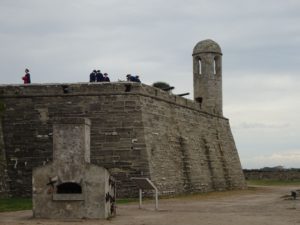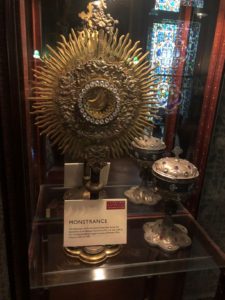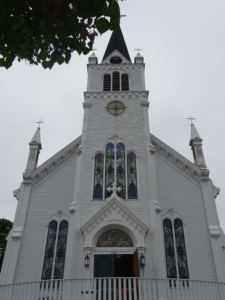
Brought to Santa Fe, NM in 1625
Cathedral Basilica St. Francis of Assisi
Praying to Saints: Part 2
Viewed through a Catholic Lens, it is accurate to say Catholics don’t “pray to dead people.” Some of the prayers are what Protestants call “intercessory,” because someone is standing in the gap for another. When the prayers slide from intercession to supplication, the lens becomes blurry. Asking a saint or angel to provide something may seem like God is excluded and His divine attributes transferred to created beings.
In hope of clarifying these issues, my future-son-in-law wrote the following analysis of The Hail Mary Prayer:
Hail Mary, full of grace, the Lord is with you.
Blessed are you among women,
and blessed is the fruit of your womb, Jesus.
Holy Mary, mother of God, pray for us sinners, now,
and at the hour of our death, amen.
“Hail Mary, full of grace, the Lord is with you. This is the greeting of Gabriel to Mary in Luke’s Gospel, so simply quoting Scripture (Luke 1:28). The Greek word for ‘full of grace’ is often translated by Protestants as ‘highly favored,’ but at that point it’s a matter of tradition. Many of the early writers of the Church (within the first 300 years of Christ) translated it as ‘full of grace,’ and it is their early witness that Catholics look to.








